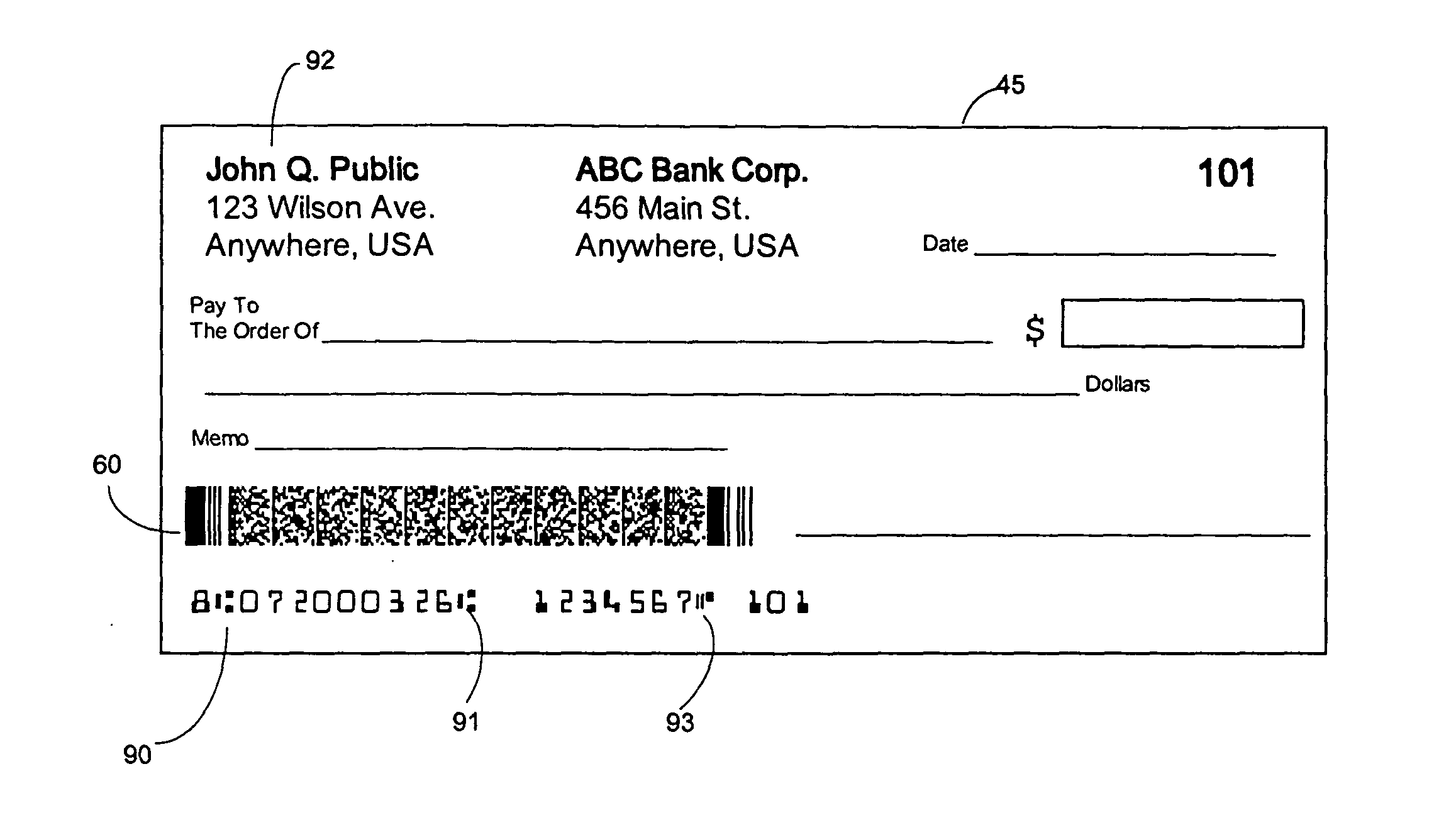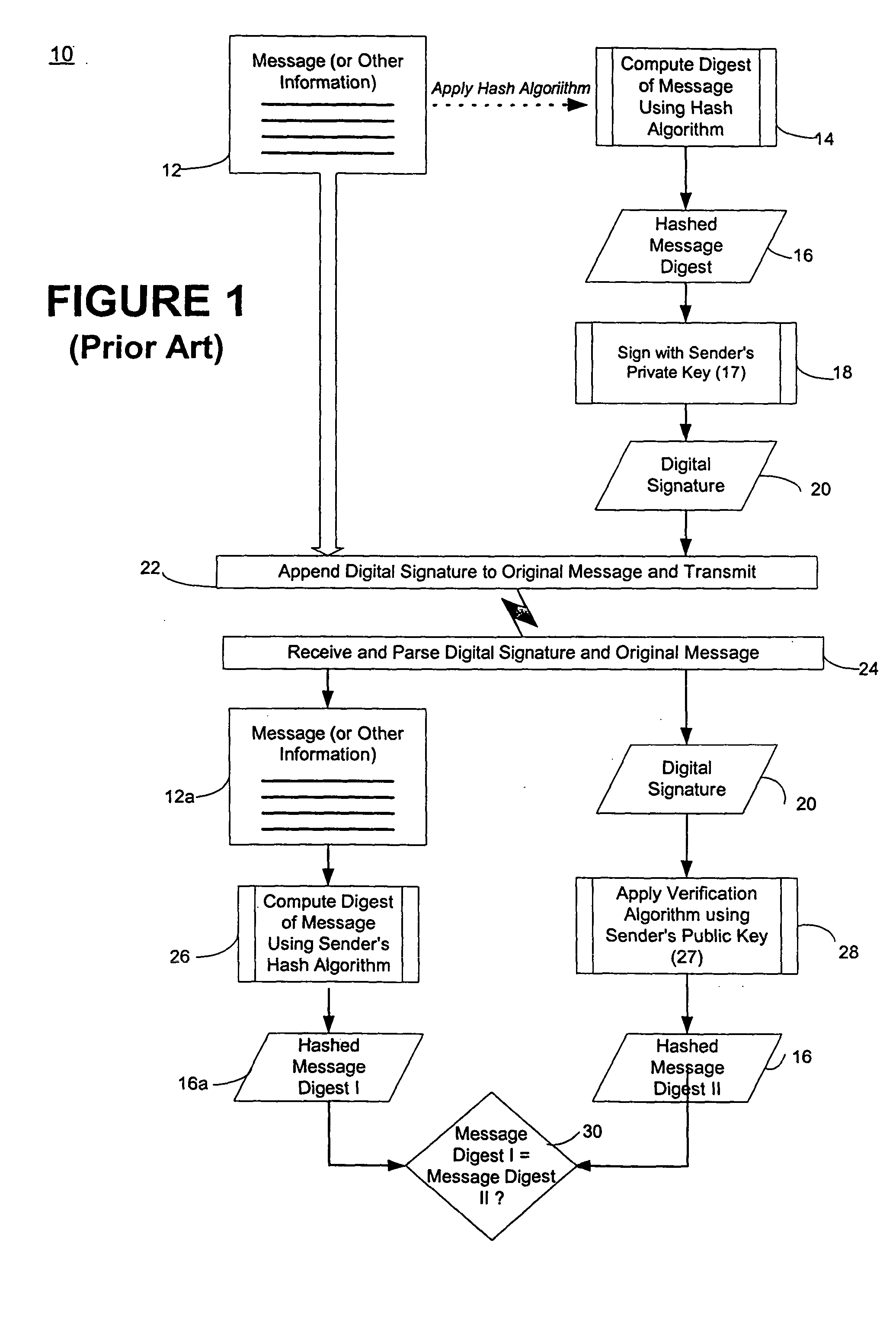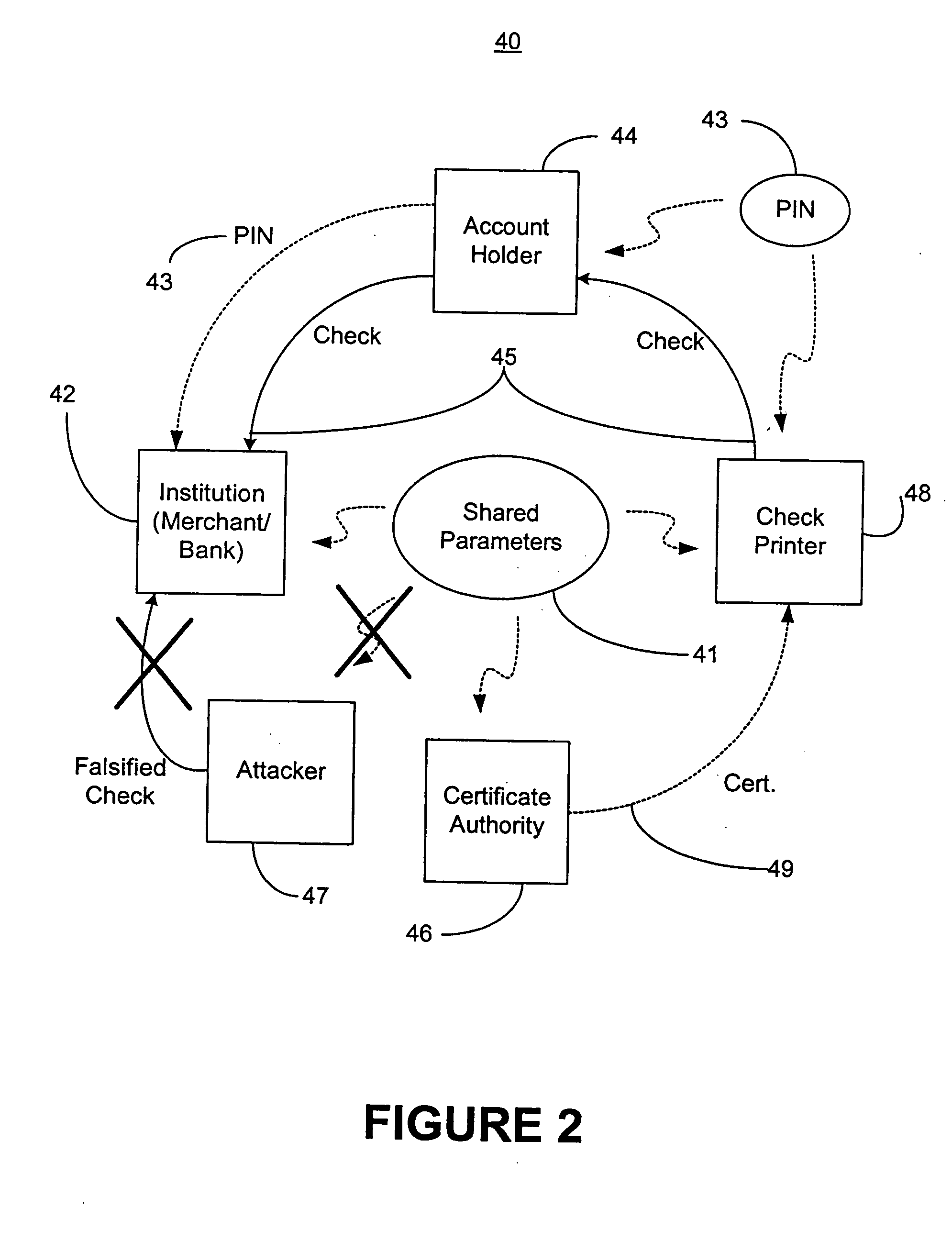Methods for authenticating self-authenticating documents
a self-authentication and document technology, applied in the field of methods for authenticating self-authentication documents, can solve the problems of no more security and high cost of encryption key management, and achieve the effect of improving reliability and reducing costs
- Summary
- Abstract
- Description
- Claims
- Application Information
AI Technical Summary
Benefits of technology
Problems solved by technology
Method used
Image
Examples
Embodiment Construction
As set forth above, it is desirable to provide an authentication system that does not require the use smart cards, and that does not require data encryption. As will be described in more details in the forthcoming paragraphs, it was found that, for both personal and commercial value documents, the use of a digital signature and a public key certificate affixed to the document itself can accomplish this goal.
In a preferred embodiment of the present invention, a first digital signature is used to sign selected pre-printed data within a personal document and a second digital signature is used to sign this pre-printed data and a unique personal identification number (PIN) chosen either by the personal document owner or the entity responsible for printing the document. The addition of a public key certificate issued from a trusted certificate authority (CA), along with these two digital signatures, provides a self-authenticating document that can be used at point of purchase to validat...
PUM
 Login to View More
Login to View More Abstract
Description
Claims
Application Information
 Login to View More
Login to View More - R&D
- Intellectual Property
- Life Sciences
- Materials
- Tech Scout
- Unparalleled Data Quality
- Higher Quality Content
- 60% Fewer Hallucinations
Browse by: Latest US Patents, China's latest patents, Technical Efficacy Thesaurus, Application Domain, Technology Topic, Popular Technical Reports.
© 2025 PatSnap. All rights reserved.Legal|Privacy policy|Modern Slavery Act Transparency Statement|Sitemap|About US| Contact US: help@patsnap.com



